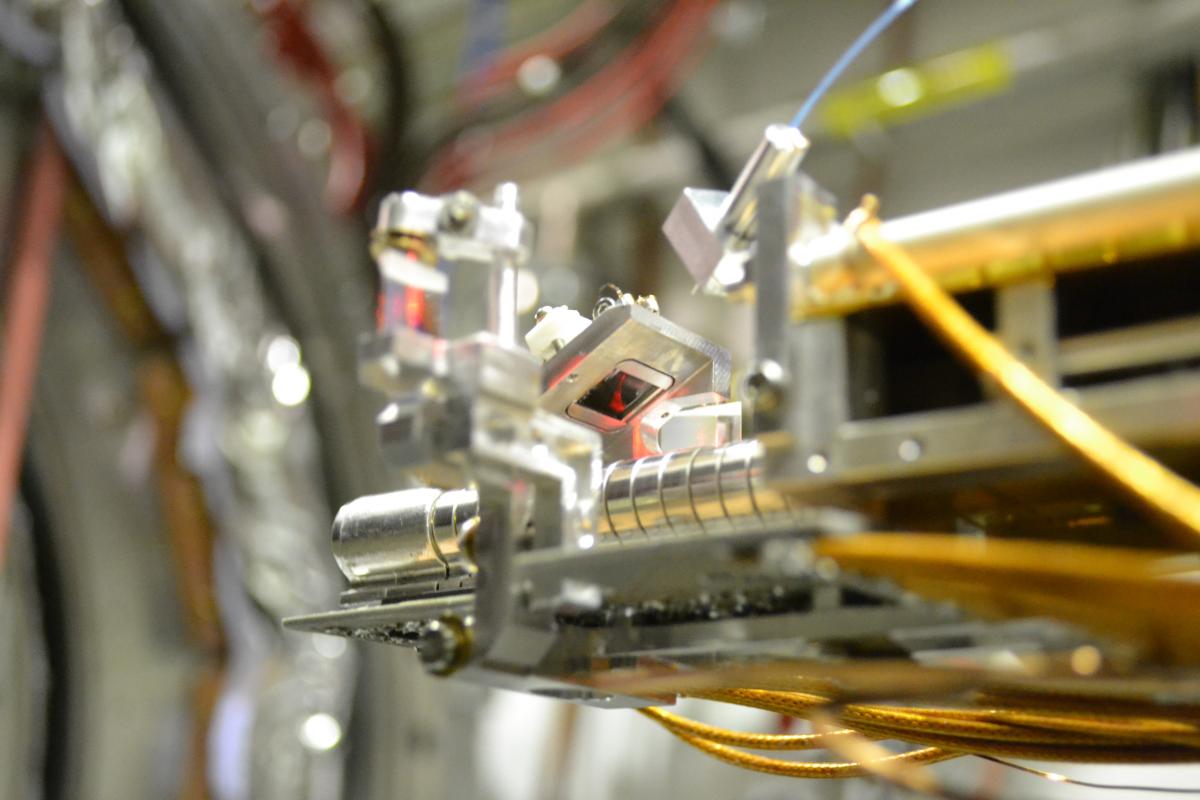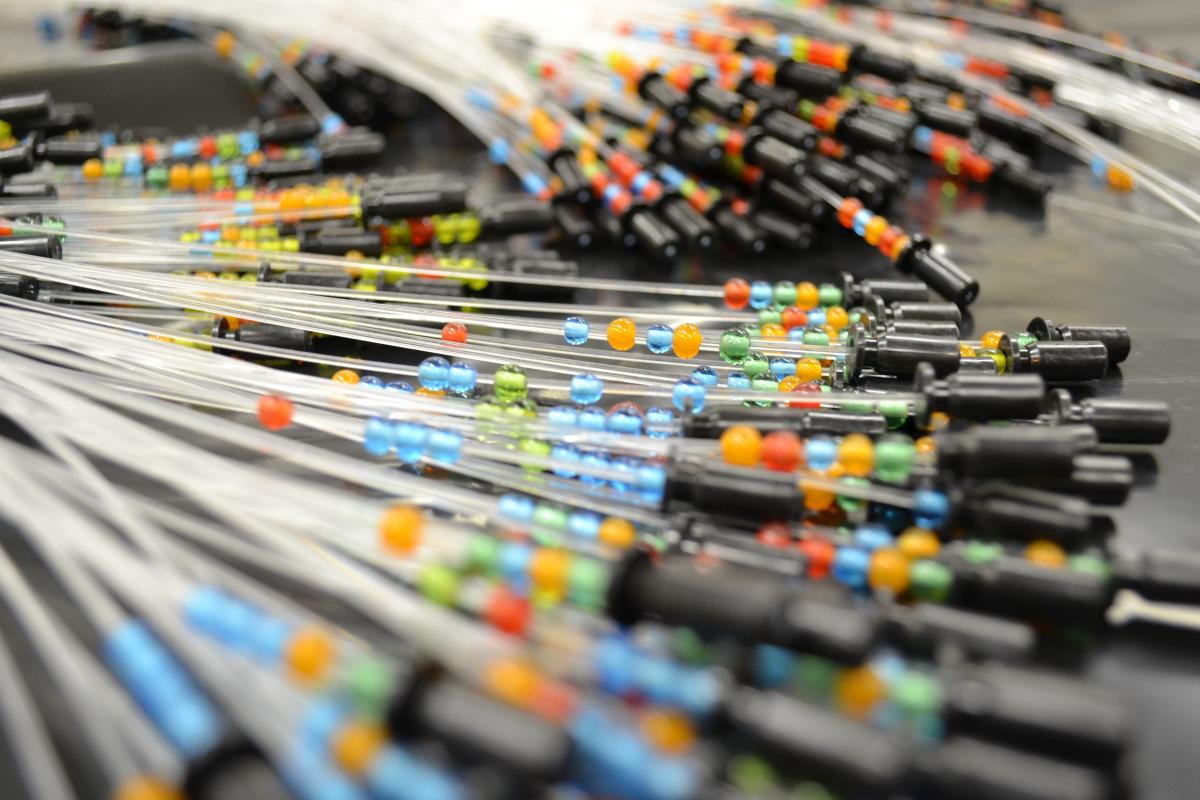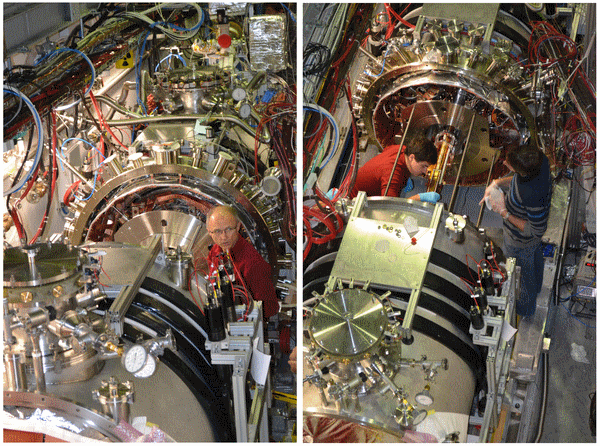The AEgIS Experiment
If apples fall down, do anti-apples fall up? Or do ordinary particles fall with the same acceleration as antiparticles?
According to Einstein's Weak Equivalence Principle (WEP), gravity is independent of mass and composition, hence the answer to the above question should be yes. The WEP, however, has been tested successfully for matter, but never for antimatter. Experiments with positrons and antiprotons have been conducted in the past, but they were not successful due to the sensitivity of charged particles to external electric and magnetic fields and the weakness of gravity. So, the effect of gravity on antimatter has yet to be explored. If antiparticles violated the WEP and interacted with ordinary particles, they might create an anomaly, namely an “anti-gravity” effect. Any difference in the properties of matter and antimatter might help to explain the matter-antimatter asymmetry in the visible universe.
The AEgIS experiment (Antimatter Experiment: Gravity, Interferometry, Spectroscopy) at CERN is designed to examine the effects of gravity on antimatter. More specifically, the scientists will produce an antihydrogen pulsed beam and shoot it horizontally through a vacuum tube in order to measure how far it falls in a given amount of time. Anti-hydrogen has been chosen since it is not much affected by magnetic or electric fields, contrary to charged anti-particles and hence it should be easier to probe any discrepancies.

Figure 1: In order to study the effects of gravity on antimatter, scientists working in the AEgIS experiment will produce an antihydrogen pulsed beam and shoot it horizontally through a vacuum tube in order to measure how far it falls in a given amount of time.
It may sound simple, but producing an entire pulsed beam composed of anti-atoms is not a piece of cake. The AEgIS team has to overcome a number of difficulties, such as managing large electromagnetic fields and powerful cryogenic systems; the biggest challenge being of course the production of antihydrogen.
Experimental Facility
Located in the experimental hall at the Antiproton Decelerator (AD), the AEgIS experiment will send a pulsed beam of antihydrogen atoms through very thin gratings, before annihilating them on a hybrid detector (composed of silicon strips, photographic emulsions and scintillating fibers) thanks to which they will measure how far the antihydrogen atoms fall and in how much time, thus giving the AEgIS team a measurement of the gravitational coupling.

Figure 2: The antihydrogen production region, with positronium production target, lasers (reflector and fiber for UV and IR), and electrodes of the Penning trap holding antiprotons.

Figure 3: The color-coded connectors for the light-carrying fibers of the fiber-tracker (antihydrogen detector).
First, they have to create positrons from a 22Na (Surko-type) source and collect antiprotons in a Penning trap from CERN's Antiproton Decelerator (AD). Then, positronium atoms of electrons and anti-electrons has to be produced by bombarding a nanoporous material with e+ at energies of several keV. In addition, the positronium is exposed to two custom-made laser beams and excited to a high energy state, namely a Rydberg level. The excited positronium enters into a recombination trap, where they combine with antiprotons to form antihydrogen atoms. The resulting Rydberg antihydrogen atoms (that are produced all at once) will then be accelerated through electric field gradients to form a pulsed horizontal beam. This beam will pass through two very thin gratings and create a shadow pattern on a third plane, that of the hybrid annihilation detector, which will be used to measure with 1% precision the vertical displacement of the beam due to gravity.
Installation and Commissioning
The installation of AEgIS (with the exception of the downstream gravity and spectroscopy modules) was completed in the first half of 2013 and commissioning of all the steps involved in forming the pulsed beam of antihydrogen is now taking place. Since the production of antiprotons only happens during half of the year, the experiment's team has decided to also form hydrogen to tune their set-up. However, conducting the experiment with hydrogen will be more difficult than using its antimatter counterpart, because a suitable detector and a proton source needed to be developed. While the hydrogen detector is still under construction, the proton source is ready for installation and commissioning in January.

Figure 4: Working in the heart of the apparatus, between the 5T antiproton and positron trapping magnet (further cryostat) and the 1T antihydrogen production magnet (closer cryostat). The gold rings seen in the right-hand picture are the Penning electrodes with which the charged particles are manipulated.
"If we succeed in making (anti)hydrogen this year (2014), that will be a huge step forward; and if we can make (anti)hydrogen beams next year (2015), then we'll really be in business” says Michael Doser, AEgIS spokesperson.
Current and Future Steps
In parallel, the scientists at AEgIS want to improve their understanding of the annihilation process itself for a better estimate of systematic uncertainties on the gravity measurement. One way to do this is by shooting antiprotons at various materials and studying the resulting fragments as they are detected in high-resolution photographic emulsions, something they did at the end of 2012 in the newly-assembled apparatus. This allows determining fragment multiplicities and (through dE/dx) roughly classifying them into nuclear fragments and minimum ionizing particles.

Figure 5: An overview of the full AEgIS apparatus: positron accumulator (blue structures towards the top of the picture), trapping and production magnets and laser hut (metallic structure to the right).
Crowd-Sourcing and Public Outreach
In order to do that efficiently, Michel Doser had an innovative idea: to use crowd-sourcing. “In principle, tracking could be digitized, but computers can miss tracks that are related, but far apart. Humans are often better at seeing correlations” he says. The crowd-sourcing interface to the data was designed by only a handful of students at CERN's Summer Student Webfest. In spite of being only a test (alpha) version, it was an immediate success. Hundreds of people contributed to the data analysis, which was completed in just a few hours. The participants identified the paths of the fragments simply by marking the track end points, one for the beginning and one for the end of each path, as they zoomed in and out of the digitized photographic emulsion images.
This was one of the first times that CERN has released detector data for public analysis. The programmers are now collecting feedback from users and other programmers in order to improve the software for a new release.
Read more:
AEgIS experiment: http://aegis.web.cern.ch/aegis/
AEgIS installation completed: http://cerncourier.com/cws/article/cern/52349
